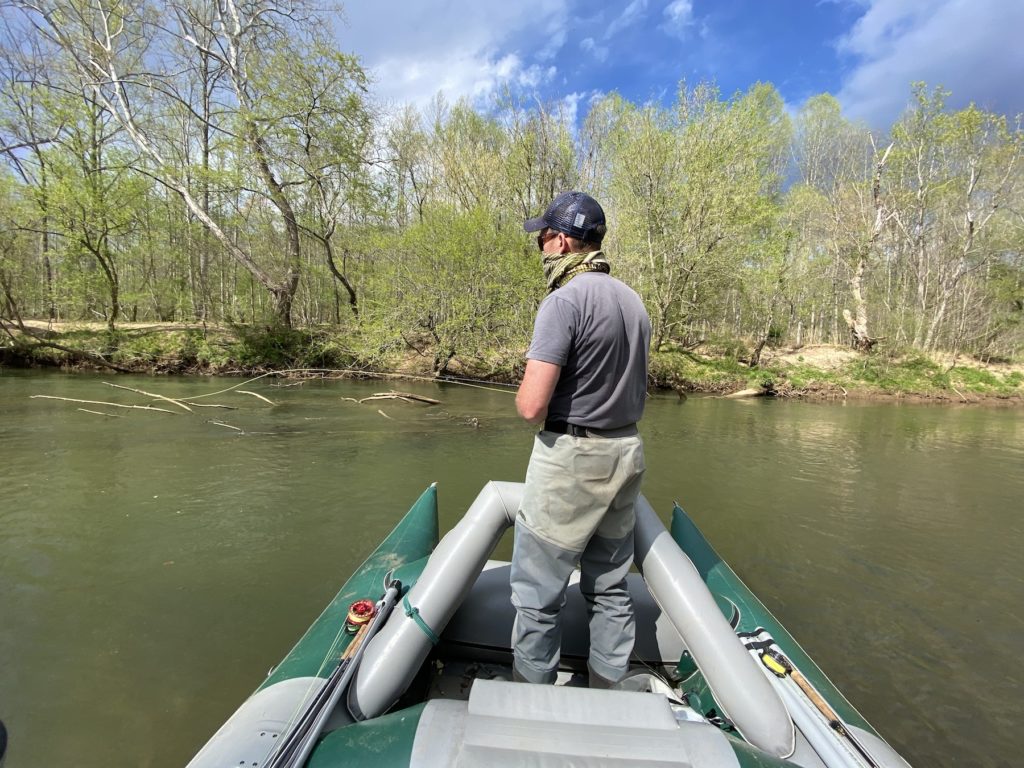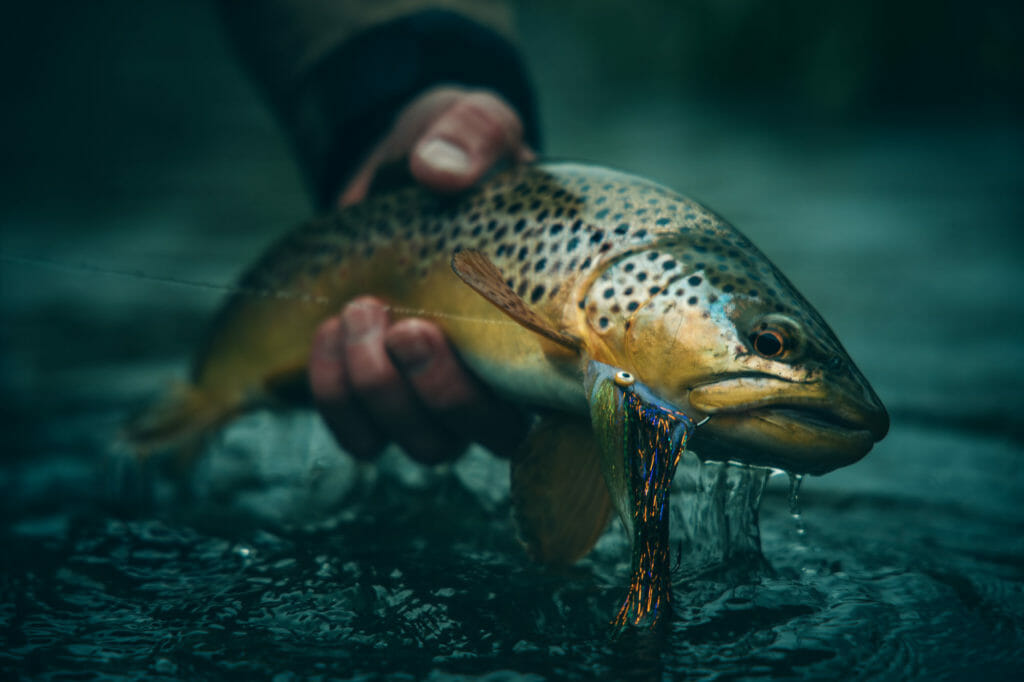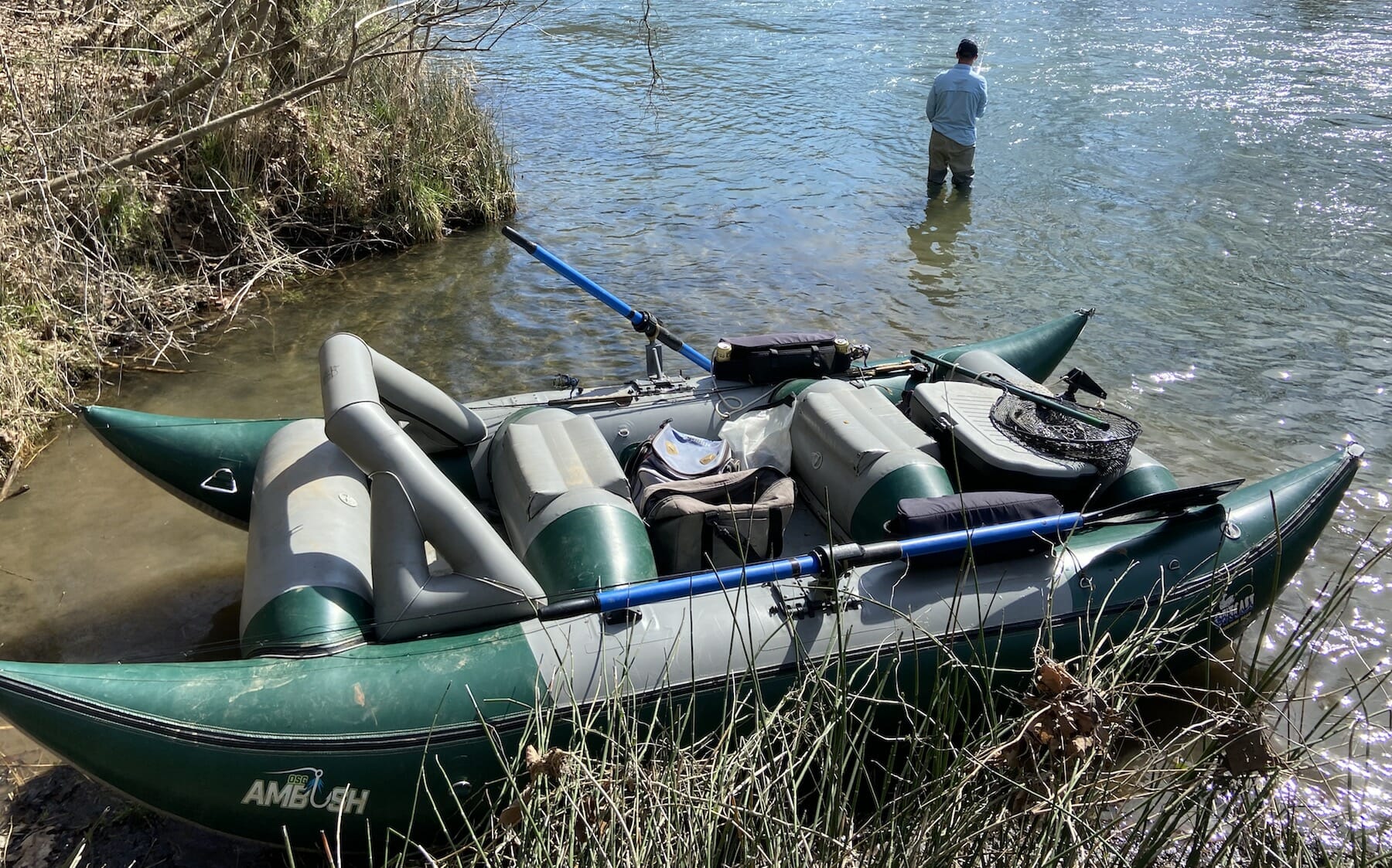By Mark Taylor
As we made our way through the final riffle, I dug the oars into the cool, green waters of Virginia’s Jackson River and aimed the stern toward the boat ramp.
“Have I told you that I love this thing?” I said to my fishing partner, Sam Dean.
My memory isn’t as good as it once was, but the fact is, I knew I had told him that.
Because I say it at the end of every float.
The object of my affection is a 14-foot-long cataraft.
When I bought it just over two years ago, I expected it to enhance my river fishing. I had no idea just how big the impact would be.
For years, while settling for fishing rivers out of a canoe, I searched for a better boat for fishing moving here in Virginia. It was a tough search, in no small part because there really isn’t such a thing as a perfect boat. There will always be compromises.
For comfort, durability and function, it’s tough to top a driftboat. But that was more than I was looking for.
I wanted something light and portable enough to be hand-launched, and that could fit into the back of my truck. So that meant it had to be an inflatable, and either a small three-person rig, or a two-person rig.
It had to be durable, but it didn’t have to be bomb-proof. And, I knew I couldn’t dip into the kids’ college fund to pay for it.
Fortunately in recent years we’ve seen a proliferation of craft that check those boxes, such as the portable inflatables from Fly Craft and Dave Scadden. I carefully considered them all before pulling the trigger on an Outcast OSG Ambush.
It’s a cataraft, but unique in that it’s frameless. The pontoons are connected by four inflatable thwarts, the middle two of which double as seats.
The thwarts take up space that exists in a hard-framed boat, so it’s not a great craft for extended overnight journeys.
The benefit of that space trade-off is weight. The whole boat weighs just 114 pounds. I can load it into my truck by myself and my two girls can easily carry the thing.

That’s handy.
The raft must be partially deflated to fit it into the bed of my full-sized truck. But it takes just 10 minutes to top it off with a K-200 hand pump.
Sure, it’s nice to be able to dump a raft or drift boat off a trailer and be fishing almost immediately. But I prefer to get the grunt work of the shuttle done before hitting the water anyway. One person gets the boat ready while the other runs the shuttle, parking the truck at the take-out and riding back to the put-in on a bike. The timing usually works out about perfectly.
Fully inflated it’s good-sized. At 14 feet long and nearly 7 feet wide, it’s quite stable on the water.
Because it draws just a few inches it’s super maneuverable. I think it handles even better than my brother’s framed, two-man Outcast PAC 1200 cataraft , itself a great (but much heavier) boat that pushed me toward considering a cat design.
Obviously, a frame provides for a stiffer and more responsive rowing set-up, but as long as the pontoons are properly inflated the Ambush is stiff enough for my needs in rivers that typically don’t have anything tougher than Class III rapids.
The fact that it’s just a two-person fishing boat would be a deal-breaker for someone who usually goes fishing with two other anglers. But that’s not me so it’s fine.

The inflated lean bar up front works well. Loose fly line tends to find its way into the gap between the bar and the pontoon but that’s a relatively minor annoyance that requires just a bit of attention to avoid.
And it’s not a fishing-only boat. Remove the casting bar and ditch the oars/oarlocks and you’ve got a fun whitewater boat for two to four paddlers.
But I use the Ambush almost exclusively for fishing, and it has been a game-changer.
It works just as well as a canoe for traversing between wading spots. But the biggest benefit, as anyone who fishes from a raft or driftboat understands, is while moving. Our catch rates, especially chucking streamers or lures for big, predatory browns and smallmouths, have really improved.
It’s a unique boat and hard to fly under the radar. At the start of a float a couple of months ago, some wading anglers spotted us getting ready to hit the water.
“That’s a pretty sweet rig,” one of them said. “We’ve seen you guys on the river quite a bit lately.”
And that’s the thing. When you have a sweet rig that you love, you not only tend to fish better, you also tend to fish more.
Mark Taylor is Trout Unlimited’s eastern communications director. He’s based in Roanoke, Va., within about an hour of several great fishing rivers, including the James, New, Smith and Jackson.



